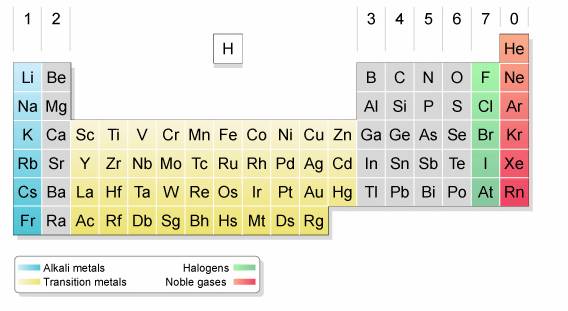

For this achievement, among others, Moissan narrowly defeated Mendeleev for the Nobel Prize in Chemistry in 1906. After being poisoned three times while trying to isolate the element, the French chemist Henri Moissan succeeded in 1886 in electrolyzing a sample of KF in anhydrous HF to produce a pale green gas ( Figure 22.14 "Isolation of Elemental Fluorine"). Elemental fluorine proved to be very difficult to isolate, however, because both HF and F 2 are extraordinarily reactive and toxic. The solution was later recognized to contain the acid of a new element, which was named fluorine in 1812. In 1670, a German glass cutter discovered that heating fluorspar with strong acid produced a solution that could etch glass.

The mineral fluorspar (now called fluorite ) had been used since the 16th century as a “flux,” a low-melting-point substance that could dissolve other minerals and ores. He soon realized, however, that he had discovered a new element, which he named bromine from the Greek bromos, meaning “stench.” Currently, organic chlorine compounds, such as PVC (polyvinylchloride), consume about 70% of the Cl 2 produced annually organobromine compounds are used in much smaller quantities, primarily as fire retardants.īecause of the unique properties of its compounds, fluorine was believed to exist long before it was actually isolated. Because many of its properties were intermediate between those of chlorine and iodine, Balard initially thought he had isolated a compound of the two (perhaps ICl). A deep purple vapor was released, which had a biting aroma similar to that of Scheele’s “compound.” The purple substance was identified as a new element, named iodine from the Greek iodes, meaning “violet.” Bromine was discovered soon after by a young French chemist, Antoine Jérôme Balard, who isolated a deep red liquid with a strong chlorine-like odor from brine from the salt marshes near Montpellier in southern France. That same year, a French industrial chemist, Bernard Courtois, accidentally added too much sulfuric acid to the residue obtained from burned seaweed. In 1811, Scheele’s “compound” was identified as a new element, named from the Greek chloros, meaning “yellowish green” (the same stem as in chlorophyll, the green pigment in plants). Scheele was convinced, however, that the pale green gas he collected over water was a compound of oxygen and hydrochloric acid. In 1774, Carl Wilhelm Scheele (the codiscoverer of oxygen) produced chlorine by reacting hydrochloric acid with manganese dioxide.


Halogen periodic table free#
The video below provides an overview of the halogens.Because the halogens are highly reactive, none is found in nature as the free element.Ĭhlorine was the first halogen to be obtained in pure form. Halogen – One of the 5 non-metals in group 7 of the periodic table.ĭisplacement reaction – A reaction in which a more reactive element takes the place of a less reactive element in a compound. Halogens become less reactive as you go down group 7 in the periodic table, because the outer electron shell gets further away from the attraction of the nucleus, and so an electron is gained less easily.Ī less reactive halogen will be displaced by a more reactive one from an aqueous solution of its metal halide.Ĭhlorine + potassium bromide → potassium chloride + bromine Iodine (State of matter at room temperature) Solid (Colour) Grey/ black They form hydrogen halides, which dissolve in water, forming acidic solutions.įluorine (State of matter at room temperature) Gas (Colour) YellowĬhlorine (State of matter at room temperature) Gas (Colour) Greenīromine (State of matter at room temperature) Liquid (Colour) Red/ orange They form molecular compounds with non-metals. They react with metals to form ionic compounds where the halide ion has a charge of -1. They consist of molecules made up of two atoms (diatomic molecules). The halogens have the following properties: Group 7 of the periodic table is home to the Halogens.


 0 kommentar(er)
0 kommentar(er)
